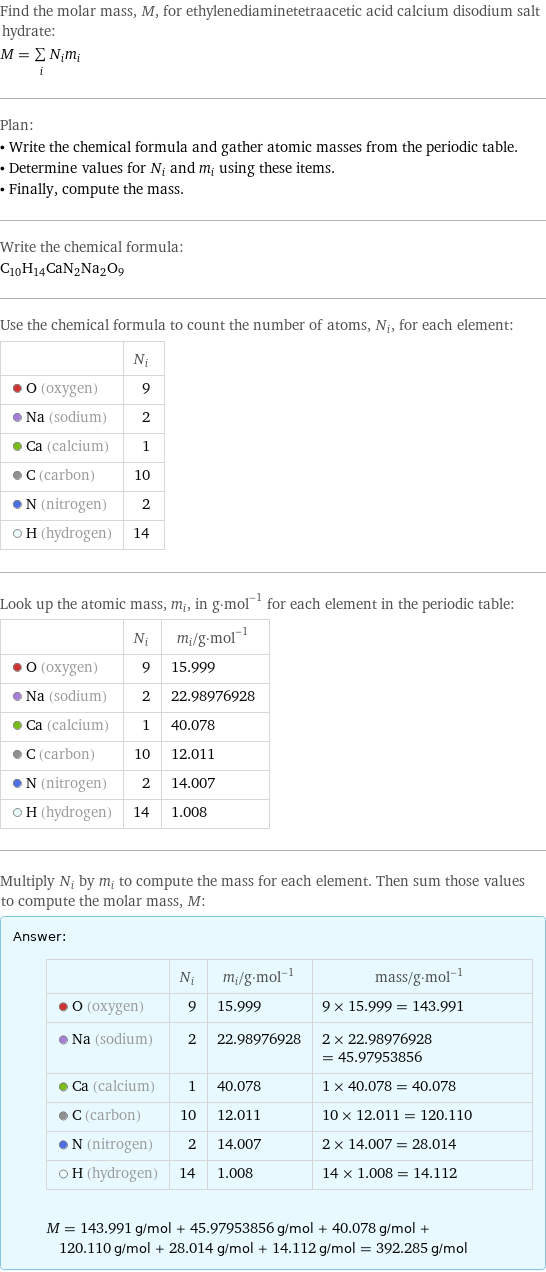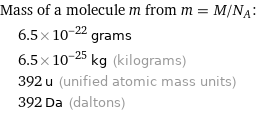Input interpretation

ethylenediaminetetraacetic acid calcium disodium salt hydrate | molar mass
Result

Find the molar mass, M, for ethylenediaminetetraacetic acid calcium disodium salt hydrate: M = sum _iN_im_i Plan: • Write the chemical formula and gather atomic masses from the periodic table. • Determine values for N_i and m_i using these items. • Finally, compute the mass. Write the chemical formula: C_10H_14CaN_2Na_2O_9 Use the chemical formula to count the number of atoms, N_i, for each element: | N_i O (oxygen) | 9 Na (sodium) | 2 Ca (calcium) | 1 C (carbon) | 10 N (nitrogen) | 2 H (hydrogen) | 14 Look up the atomic mass, m_i, in g·mol^(-1) for each element in the periodic table: | N_i | m_i/g·mol^(-1) O (oxygen) | 9 | 15.999 Na (sodium) | 2 | 22.98976928 Ca (calcium) | 1 | 40.078 C (carbon) | 10 | 12.011 N (nitrogen) | 2 | 14.007 H (hydrogen) | 14 | 1.008 Multiply N_i by m_i to compute the mass for each element. Then sum those values to compute the molar mass, M: Answer: | | | N_i | m_i/g·mol^(-1) | mass/g·mol^(-1) O (oxygen) | 9 | 15.999 | 9 × 15.999 = 143.991 Na (sodium) | 2 | 22.98976928 | 2 × 22.98976928 = 45.97953856 Ca (calcium) | 1 | 40.078 | 1 × 40.078 = 40.078 C (carbon) | 10 | 12.011 | 10 × 12.011 = 120.110 N (nitrogen) | 2 | 14.007 | 2 × 14.007 = 28.014 H (hydrogen) | 14 | 1.008 | 14 × 1.008 = 14.112 M = 143.991 g/mol + 45.97953856 g/mol + 40.078 g/mol + 120.110 g/mol + 28.014 g/mol + 14.112 g/mol = 392.285 g/mol
Unit conversion

0.3923 kg/mol (kilograms per mole)
Comparisons

≈ 0.54 × molar mass of fullerene ( ≈ 721 g/mol )

≈ 2 × molar mass of caffeine ( ≈ 194 g/mol )

≈ 6.7 × molar mass of sodium chloride ( ≈ 58 g/mol )
Corresponding quantities

Mass of a molecule m from m = M/N_A: | 6.5×10^-22 grams | 6.5×10^-25 kg (kilograms) | 392 u (unified atomic mass units) | 392 Da (daltons)

Relative molecular mass M_r from M_r = M_u/M: | 392